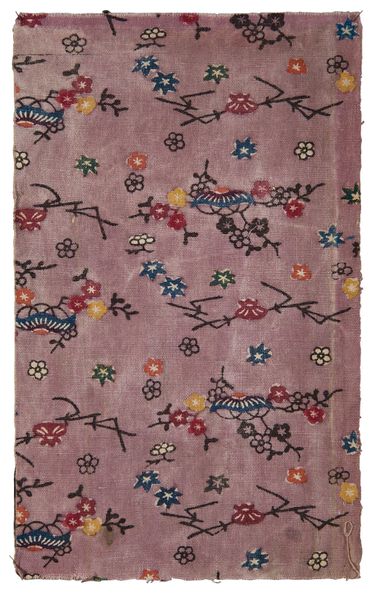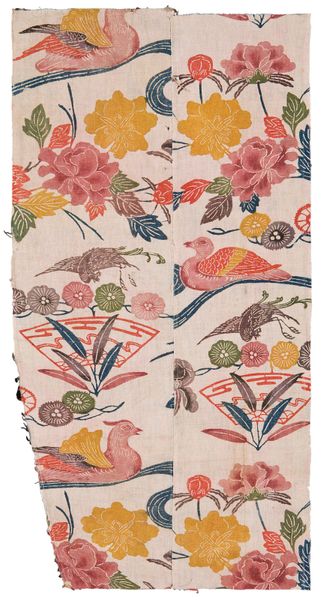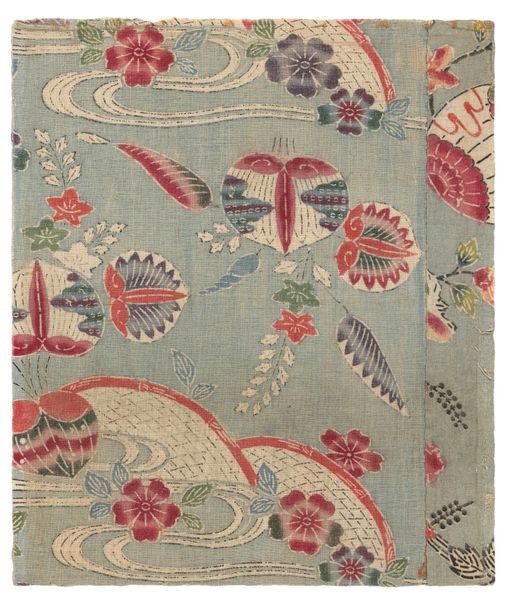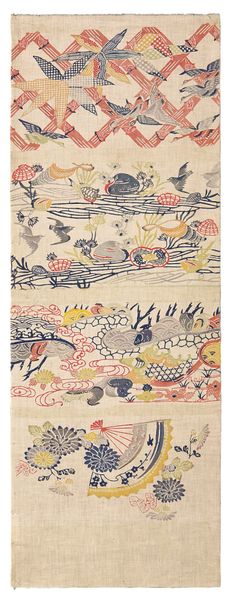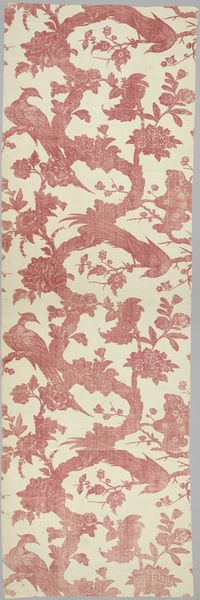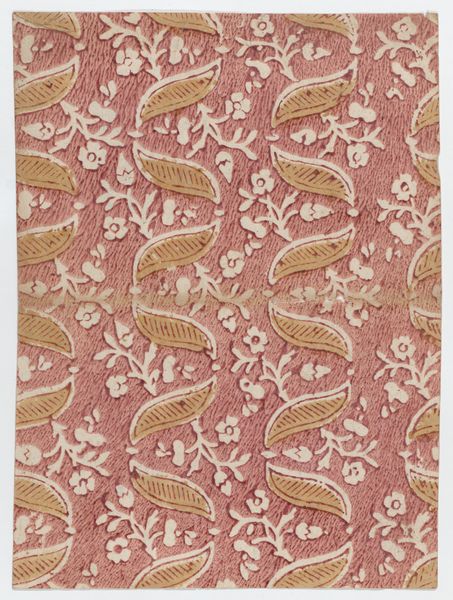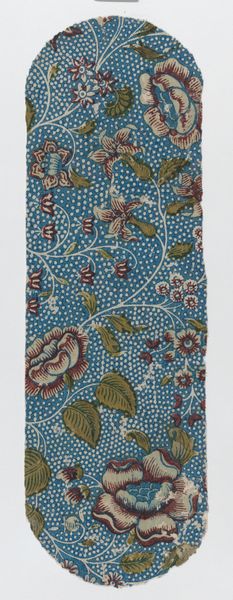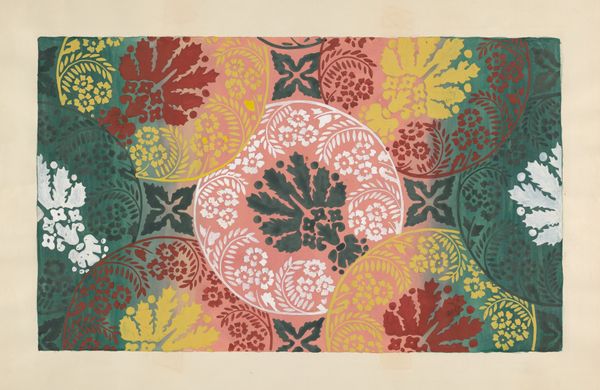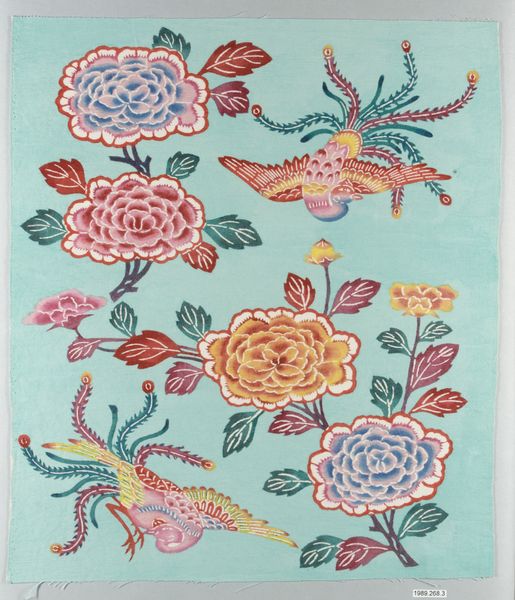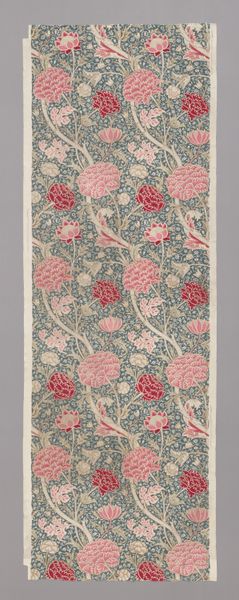
textile
#
pattern heavy
#
naturalistic pattern
#
organic
#
pattern
#
asian-art
#
textile
#
japan
#
geometric pattern
#
pattern background
#
abstract pattern
#
organic pattern
#
geometric
#
repetition of pattern
#
regular pattern
#
pattern repetition
#
decorative-art
#
layered pattern
Dimensions: 8 7/8 × 6 1/4 in. (22.54 × 15.88 cm)
Copyright: Public Domain
This small fragment decorated with pine, now at the Minneapolis Institute of Art, carries the weight of a culture’s aesthetic and social values on its delicate surface. It is impossible to know when it was made, or by whom, but its colorful patterns offer a glimpse into the identities and histories of those who created and encountered it. We see pine, plum blossoms, and clouds rendered in a palette of teal, maroon, red, yellow, and pink. These motifs would have resonated deeply within its original cultural context, each element laden with symbolic meaning. The pine, for example, often represents longevity and steadfastness, while plum blossoms symbolize resilience and renewal, especially significant as they bloom in early spring. Consider how the choice and arrangement of these patterns served not only as decoration but also as a form of visual language, communicating ideas about nature, time, and the human condition. This fragment invites us to consider the intricate relationships between art, identity, and the stories we tell ourselves about the world.
Comments
No comments
Be the first to comment and join the conversation on the ultimate creative platform.

